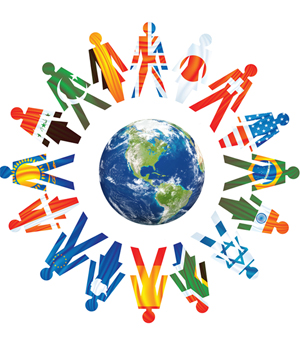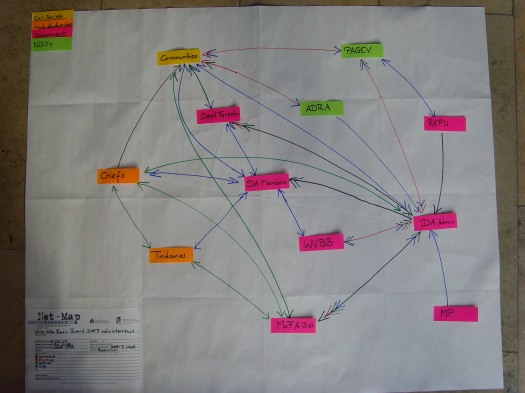To say that everybody is connected seems almost commonplace in today’s global and integrated world. Internet, social media and smart devices created a level of connectivity never seen before. It is a ‘global village’ of 7.5 billion people wirelessly linked.
But, if it is true that we stay on-line virtually all the time, it appears that we may not be using communications technology to their fullest potential. One thing is to use the internet to stay in touch with friends, to follow your favourite celebrity, or to advertise and buy on-line. A different thing is to use technology and communications tools to enhance the power of human networking.

It was Eleanor Harrison, CEO of GlobalGiving UK, which opened my eyes to this potential. During last training event for GlobalGiving Evaluation Program, she explained how charities and small organisations face major challenges to raise funds and to stand out in the crowd. It is to overcome these challenges that our field visits to grassroots NGOs will include the application of a tool called the ‘Network Mapping’.
The name is pretty self-explanatory: it consists of mapping all the contacts of your network. The idea is to identify all possible interactions that a person or organisation can have, starting from immediate names (1st level networking) and growing into contacts of contacts, and so on (2nd and 3rd-degree contacts). The purpose is to see ‘beyond the surface’, being able to pinpoint new contacts and to connect them with areas of shortage within the organisation.
The impact for fundraising is obvious as the mapping identifies new potential donors. But it also allows the organisation to develop different strategies for growth based on opportunities uncovered and new sources of skills, expertise and influence identified in the network.
With technology, creating a network map is much facilitated. Facebook and LinkedIn offer a starting point to identify valuable contacts, not to mention that online platforms even provide the structure for drawing the map. The website Bubbl, for example, helps to brainstorm, using bubbles and arrows that help the mapping process.
Working in the private sector for so long, I used to think of networking always in terms of potential new clients. But in actual fact, after the map is done, the networking potential is much greater, uncovering new opportunities and resources that were apparently non-existent. The process of doing your map even leads to a ‘self-discovery route’, where it is possible to create interactions between people and organisations that would never encounter, opening new networking circles. Quoting a recent article that I read on career networking, you can “introduce people who would typically never meet and unlock value for everyone“.
The network mapping also contributes for development policies. The International Food Policy Research (IFPR) uses a similar tool – the ‘Net-Map Method’ – to design participatory policies, ranging from nutrition-related programs to climate change. According to the Eva Schiffer, who developed the tool for the IFPR: “Net-Map helps people understand, visualize, discuss, and improve situations in which many different actors influence outcomes. By creating maps, individuals and groups can clarify their own view of a situation, foster discussion, and develop a strategic approach to their networking activities“.

So, whatever the purpose you have in mind – fundraising for your charity, assembling contacts to raise your personal profile, identifying new opportunities for growth, or designing a participatory policy if you are a policy-maker – the true is that it all starts with exploring your human network.
I am currently preparing my own map, making the most of Facebook, LinkedIn and social media. So, thank you Eleanor for showing me this new form of ‘networking capital’. It is a new world indeed.


Loving this Maria! I really enjoyed reading this article 🙂
LikeLike
Thanks Andi! 🙂
LikeLike